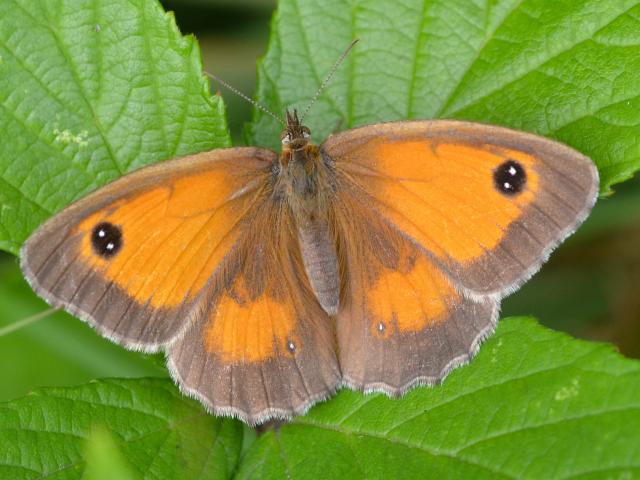Wildlife charity Butterfly Conservation has released data on the number of butterflies and some day-flying moths recorded across this UK during this year’s Big Butterfly Count, which ran from 15th July – 7th August.
The Gatekeeper, a species often found along hedgerows and woodland rides, as well as in gardens, in the southern half of Britain, was the most spotted butterfly during this year’s Big Butterfly Count. This is welcome news, as the Gatekeeper experienced its second worst Big Butterfly Count result in summer 2021, and it’s the first time since 2017 that this species has had the top spot overall.
It was good news for the blues as well – with both the Common Blue and the Holly Blue species faring well in the 2022 Big Butterfly Count. Having had their worst results in 2021, these species bounced back, with the numbers reported increasing by 154% for the Common Blue and 120% for the Holly Blue.
Another winner for the 2022 Count was the Comma, a popular species often found in gardens, that saw an increase of 95% compared with last year. The Comma has been making a slow comeback from its low point in the 1910s and expanding its range rapidly northwards.
An increase in range – a result of climate change – accounts for many of the sightings of these species in the north of the UK. The Holly Blue butterfly, for example, had only occasionally been recorded in Scotland prior to the 2000s, but after becoming firmly established in Edinburgh from 2006 and in Ayr from 2008 the species has subsequently spread across swathes of Scotland.
Overall, the trend for butterflies across the UK remains a declining one, with the results of the Big Butterfly Count 2022 showing an average of just under 9 butterflies seen per Count, which is once again an all-time low in the thirteen years since the citizen science project began.
Species that saw a worrying decline from last year include some well-known favourites, such as Red Admiral, Small White and Meadow Brown.
Head of Science for Butterfly Conservation, Dr Richard Fox, said: “We might have expected this summer to have been a much better one for butterflies given the good weather we experienced in many parts of the UK. The fact that more butterflies weren’t seen is concerning and it’s clear that much more needs to be done to protect and restore habitats to aid nature recovery. The sun could shine for days on end, but we still won’t see more butterflies unless there is habitat for them to thrive in.”
Almost 100,000 Butterfly Counts were carried out during the event, with participants spending a combined total of over two and a half years counting butterflies in their gardens, local parks and in the countryside.
Dr Zoe Randle, Senior Surveys Officer at Butterfly Conservation, said: “The vast majority of Big Butterfly Counts are done in gardens, which makes this data especially valuable because this type of habitat is under-represented in many of our other schemes.
“We can create habitat for butterflies such as the Holly Blue and Comma in our gardens, by cultivating Holly and flowering Ivy for the former and growing Hop, elms and nettles for the latter. Gardens that are wildlife friendly can provide vital habitat for these insects, allowing them space to feed, breed and shelter.”
The Big Butterfly Count is the largest citizen-science project of its kind and relies on volunteers spending 15 minutes outside each summer, counting the number and type of butterflies they see. Taking part each year helps scientists to gather important data on how butterflies and moths are coping with changing climate, changing weather, and habitat loss. Next year’s Big Butterfly Count will take place from Friday 14th July – Sunday 6th August 2023.







